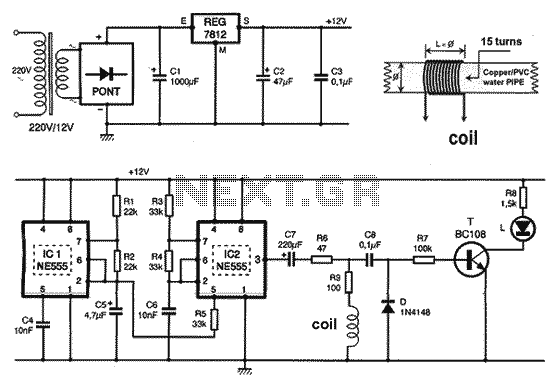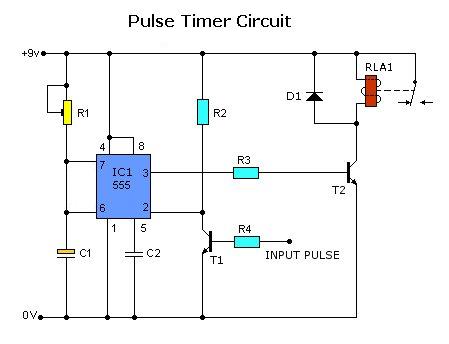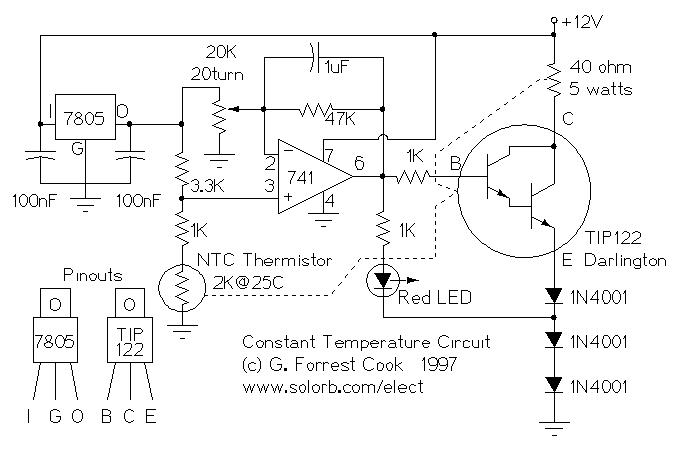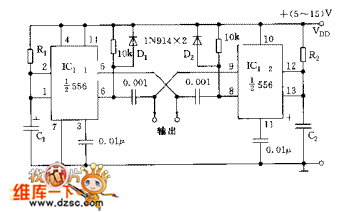
Tone Control Circuit
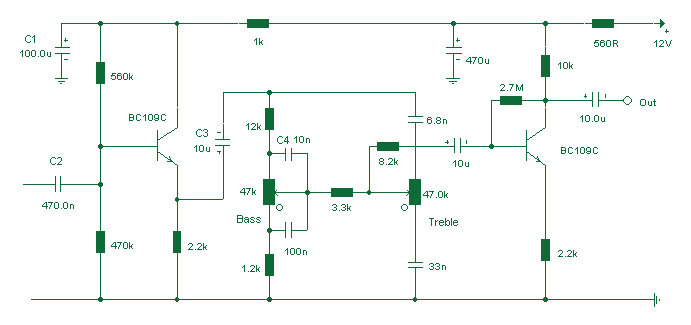
Based on the classic Baxendall tone control circuit, this provides a maximum cut and boost of around 10dB at 10K and 50Hz. As the controls are passive, the last transistor provides a slight boost. The output is designed to feed an amplifier with input impedance of 10k to 250k. Both tone controls should be linear potentiometers.
The described circuit is a Baxendall tone control circuit, which is widely used in audio applications for adjusting the tonal quality of sound signals. The circuit typically consists of two main sections: a bass control and a treble control. Each control section utilizes linear potentiometers to adjust the levels of the respective frequency bands.
In this implementation, the circuit allows for a maximum cut and boost of approximately 10 dB at frequencies of 50 Hz for bass and 10 kHz for treble. This is achieved through the use of passive components, including resistors and capacitors, which shape the frequency response. The passive nature of the tone controls means that they do not introduce significant distortion or noise, maintaining the integrity of the audio signal.
The final transistor stage serves a crucial role by providing a slight gain to the overall output signal, compensating for any loss incurred by the passive controls. This transistor is typically configured as a common emitter amplifier, which allows for a modest increase in output level while maintaining a low output impedance. This characteristic is essential for driving subsequent stages, such as an audio amplifier, without degradation of the signal.
The output stage is tailored to interface with amplifiers that have an input impedance ranging from 10 kΩ to 250 kΩ. This wide range of input impedance ensures compatibility with various amplifiers and helps to prevent loading effects that could adversely affect the tone control performance.
Overall, this Baxendall tone control circuit is a versatile solution for audio applications, providing users with the ability to fine-tune their sound to suit personal preferences while ensuring high fidelity and minimal signal loss.Based on the classic Baxendall tone control circuit, this provides a maximum cut and boost of around 10dB at 10K and 50Hz. As the controls are passive, the last transistor provides a slight boost. The output is designed to feed an amplifier with input impedance of 10k to 250k. Both tone controls should be linear potentiometers. 🔗 External reference
The described circuit is a Baxendall tone control circuit, which is widely used in audio applications for adjusting the tonal quality of sound signals. The circuit typically consists of two main sections: a bass control and a treble control. Each control section utilizes linear potentiometers to adjust the levels of the respective frequency bands.
In this implementation, the circuit allows for a maximum cut and boost of approximately 10 dB at frequencies of 50 Hz for bass and 10 kHz for treble. This is achieved through the use of passive components, including resistors and capacitors, which shape the frequency response. The passive nature of the tone controls means that they do not introduce significant distortion or noise, maintaining the integrity of the audio signal.
The final transistor stage serves a crucial role by providing a slight gain to the overall output signal, compensating for any loss incurred by the passive controls. This transistor is typically configured as a common emitter amplifier, which allows for a modest increase in output level while maintaining a low output impedance. This characteristic is essential for driving subsequent stages, such as an audio amplifier, without degradation of the signal.
The output stage is tailored to interface with amplifiers that have an input impedance ranging from 10 kΩ to 250 kΩ. This wide range of input impedance ensures compatibility with various amplifiers and helps to prevent loading effects that could adversely affect the tone control performance.
Overall, this Baxendall tone control circuit is a versatile solution for audio applications, providing users with the ability to fine-tune their sound to suit personal preferences while ensuring high fidelity and minimal signal loss.Based on the classic Baxendall tone control circuit, this provides a maximum cut and boost of around 10dB at 10K and 50Hz. As the controls are passive, the last transistor provides a slight boost. The output is designed to feed an amplifier with input impedance of 10k to 250k. Both tone controls should be linear potentiometers. 🔗 External reference
